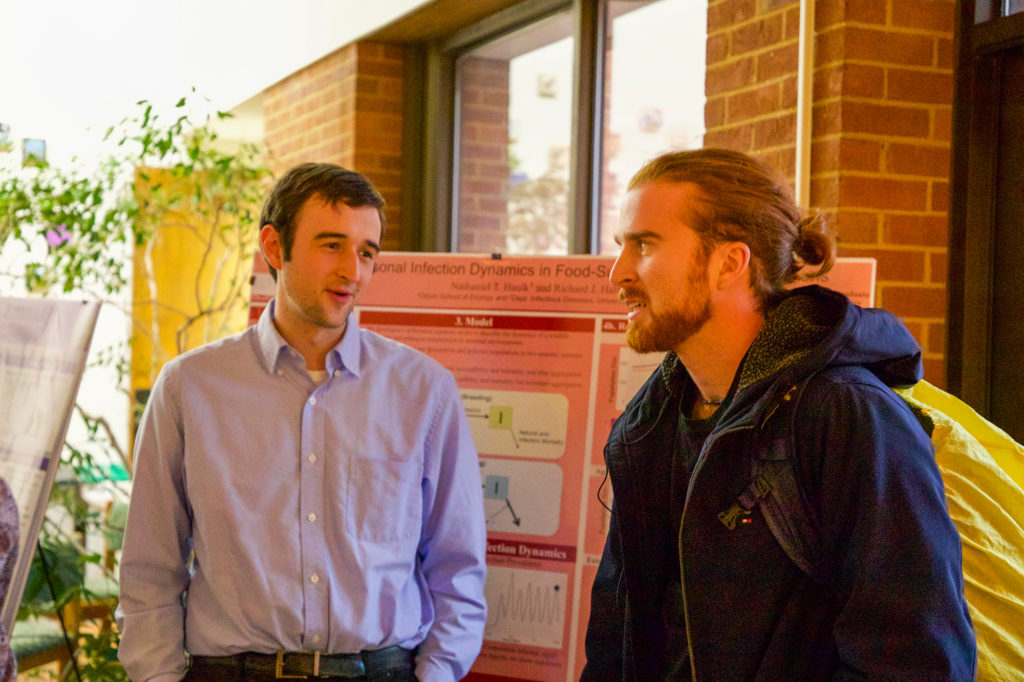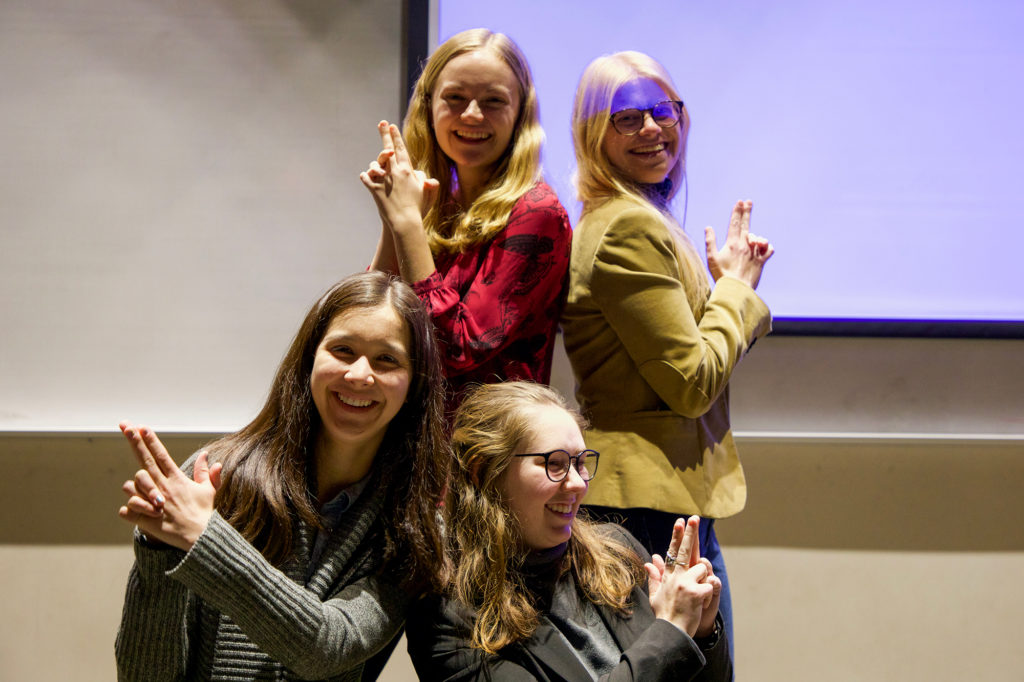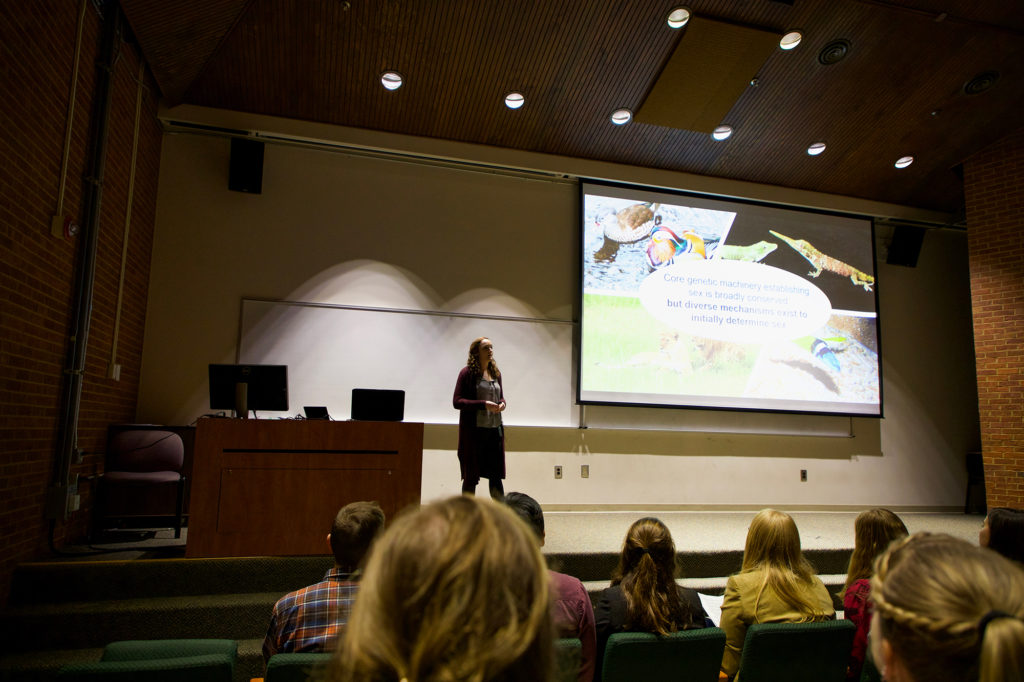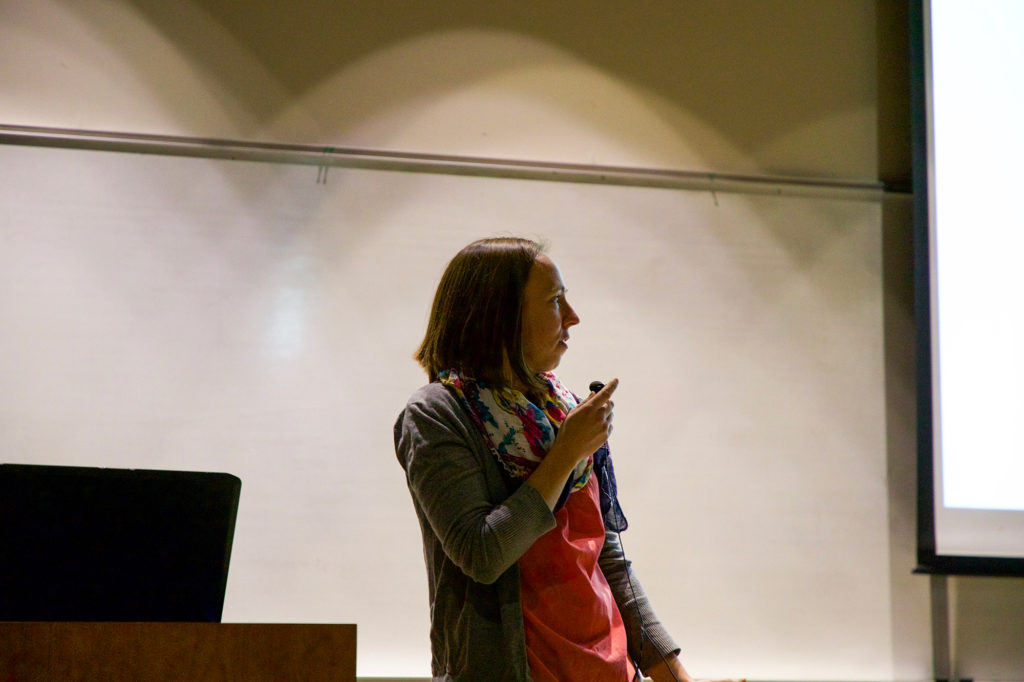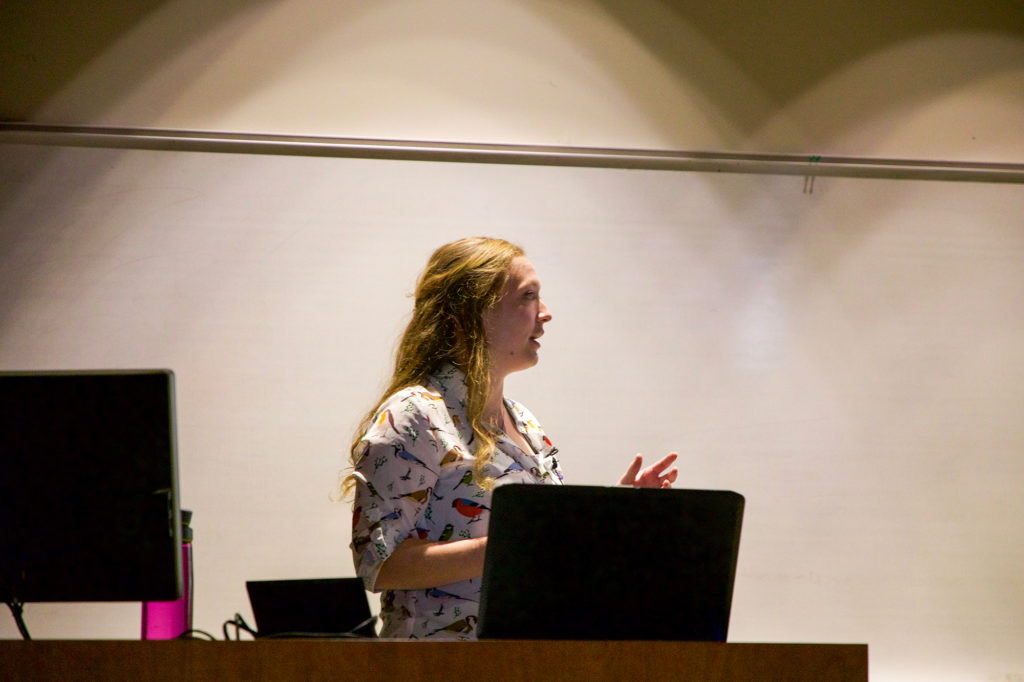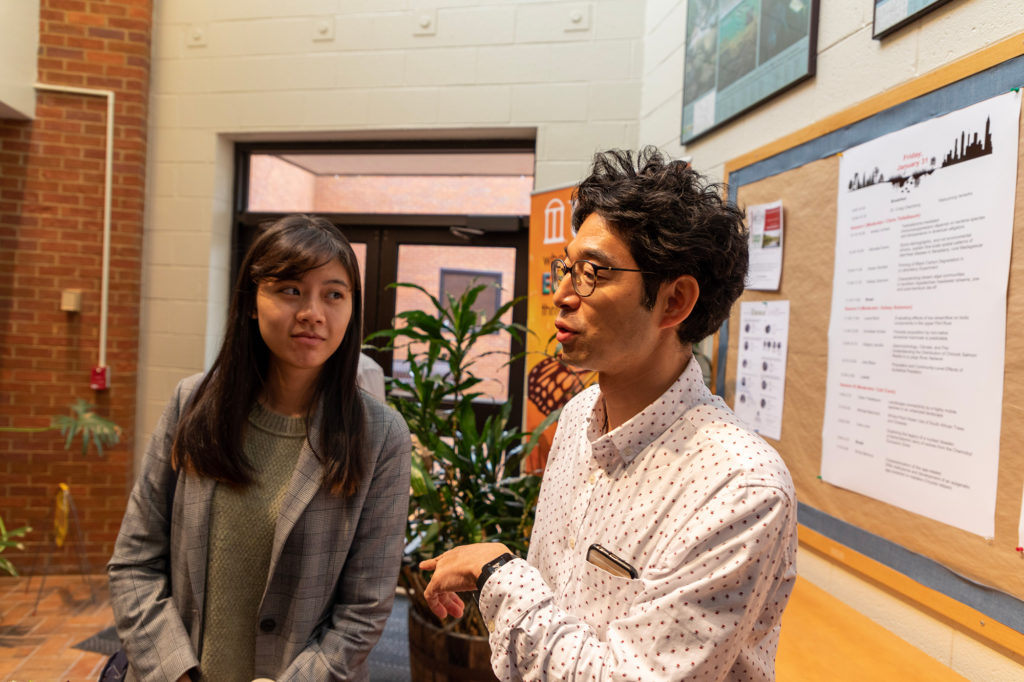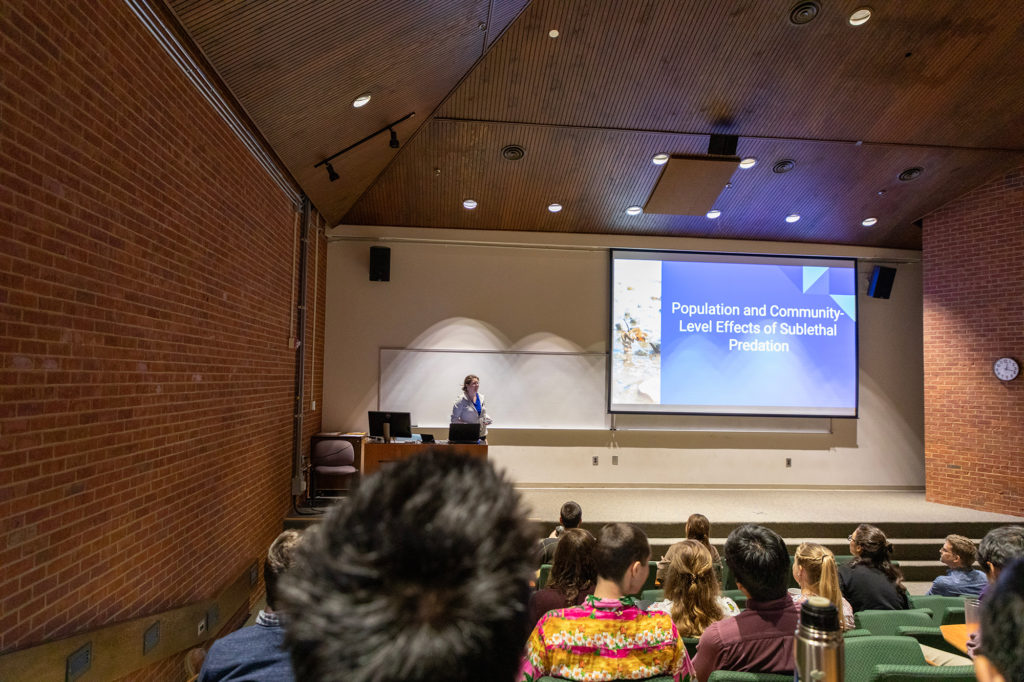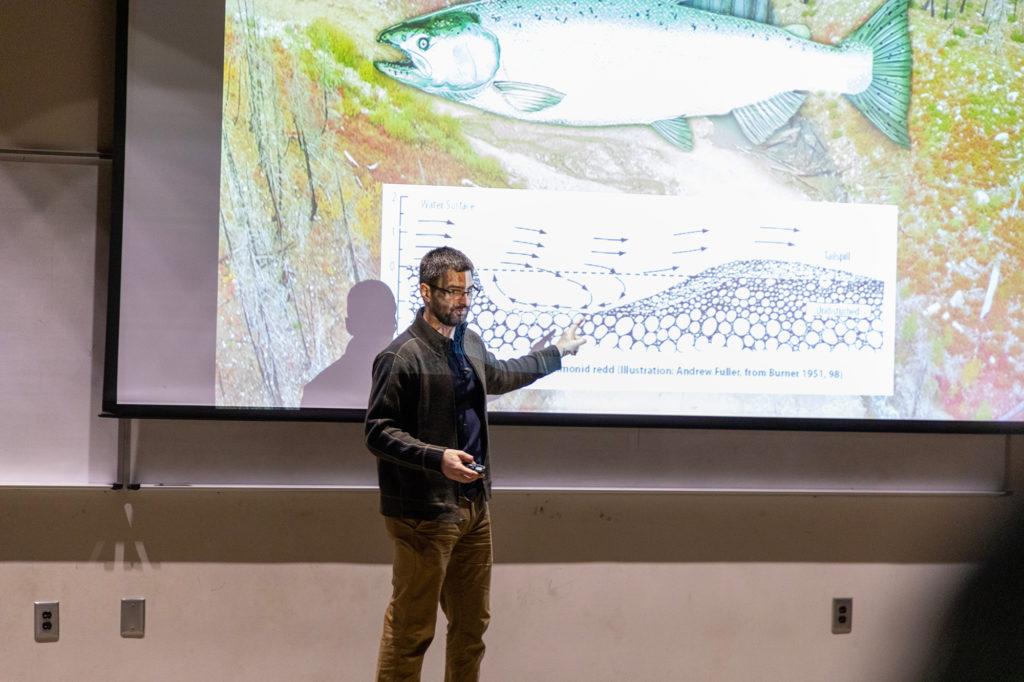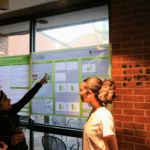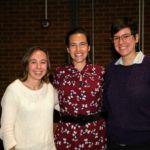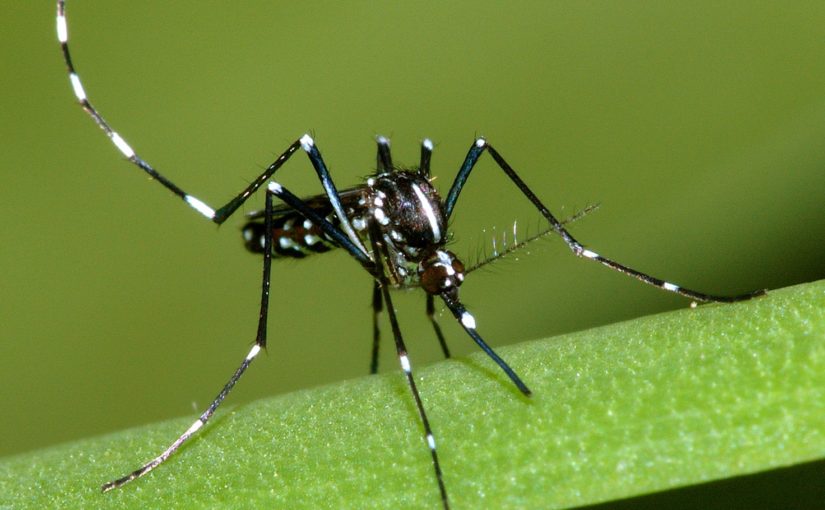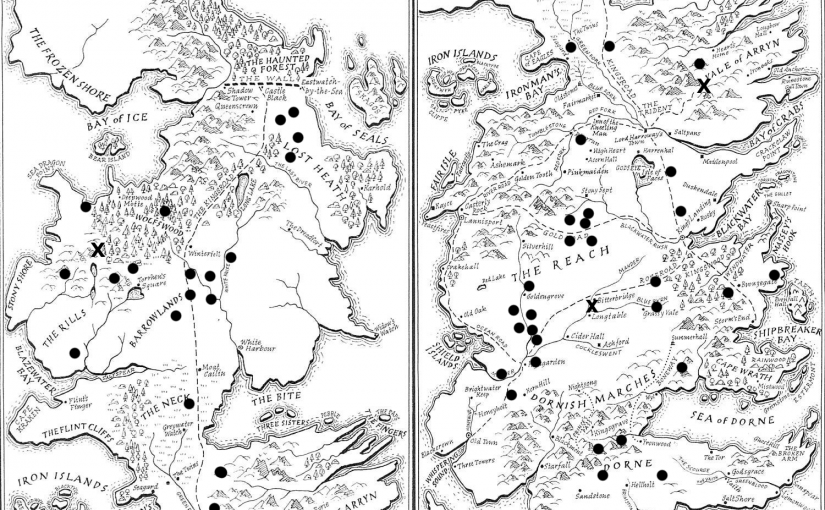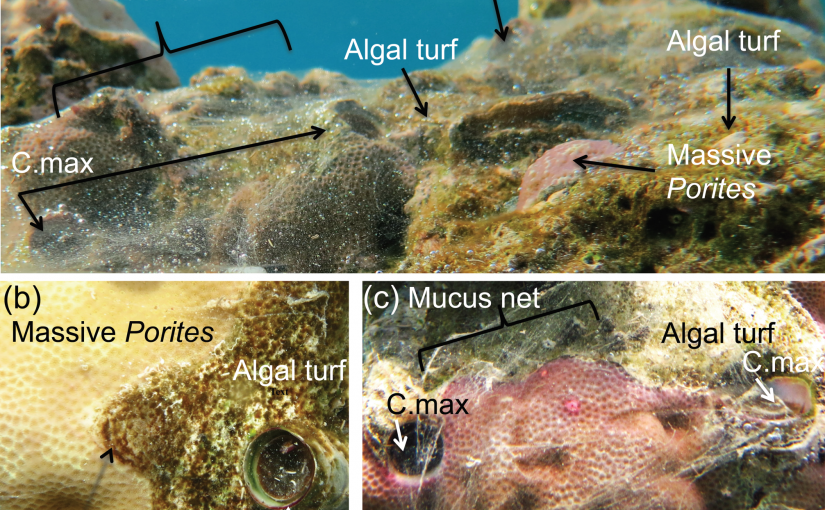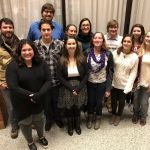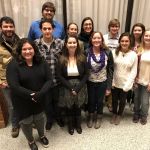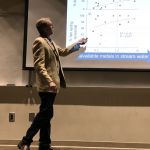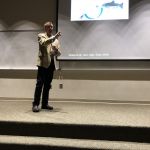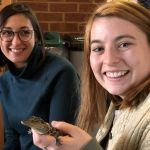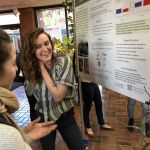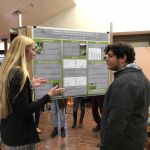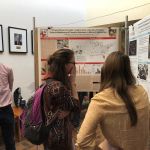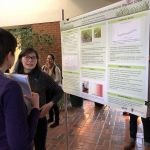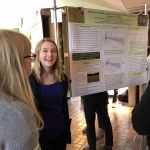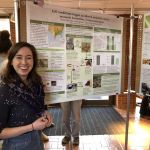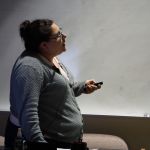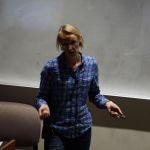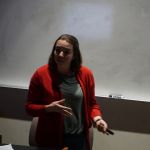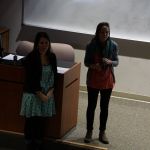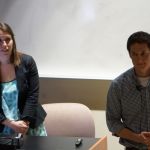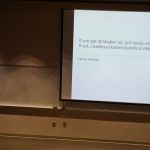The Odum graduate students organized the annual Graduate Student Symposium this past month, with undergraduate and graduate students presenting their independent research. Check out the photos below!
Graduate Student Symposium 2020 :Jan 31 – Feb 1
 The annual Graduate Student Symposium (GSS) will take place January 31 – February 1, 2020. This symposium is organized by OSE graduate students to showcase research happening within the department. It includes an undergraduate poster session, rapid talks, and full-length talks.
The annual Graduate Student Symposium (GSS) will take place January 31 – February 1, 2020. This symposium is organized by OSE graduate students to showcase research happening within the department. It includes an undergraduate poster session, rapid talks, and full-length talks.
Each year features a keynote presentation by an Odum alumni. This year’s keynote speaker is Dr. Rebeca de Jesús Crespo, Phd, ’15, currently an Assistant Professor at Louisiana State University.
Please look at the program for the full schedule of events.
Photos from GSS 2019:
City sicker? A meta‐analysis of wildlife health and urbanization
Photo Credit: Maureen Murray
Urban development can alter resource availability, land use, and community composition, which, in turn, influences wildlife health. Generalizable relationships between wildlife health and urbanization have yet to be quantified and could vary across different measures of health and among species. We present a phylogenetic meta‐analysis of 516 comparisons of the toxicant loads, parasitism, body condition, or stress of urban and non‐urban wildlife populations reported in 106 studies spanning 81 species in 30 countries. We found a small but significant negative relationship between urbanization and wildlife health, driven by considerably higher toxicant loads and greater parasite abundance, greater parasite diversity, and/or greater likelihood of infection by parasites transmitted through close contact. Invertebrates and amphibians were particularly affected, with urban populations having higher toxicant loads and greater physiological stress than their non‐urban counterparts. We also found strong geographic and taxonomic bias in research effort, highlighting future research needs. Our results suggest that some types of health risks are more pronounced for wildlife in urban areas, which could have important implications for conservation.
Microclimate and larval habitat density predict adult Aedes Albopictus abundance in urban areas
The Asian tiger mosquito, Aedes albopictus, transmits several arboviruses of public health importance, including chikungunya and dengue. Since its introduction to the United States in 1985, the species has invaded more than 40 states, including temperate areas not previously at risk of Aedes-transmitted arboviruses. Mathematical models incorporate climatic variables in predictions of site-specific Ae. albopictus abundances to identify human populations at risk of disease. However, these models rely on coarse resolutions of environmental data that may not accurately represent the climatic profile experienced by mosquitoes in the field, particularly in climatically heterogeneous urban areas. In this study, we pair field surveys of larval and adult Ae. albopictus mosquitoes with site-specific microclimate data across a range of land use types to investigate the relationships between microclimate, density of larval habitat, and adult mosquito abundance and determine whether these relationships change across an urban gradient. We find no evidence for a difference in larval habitat density or adult abundance between rural, suburban, and urban land classes. Adult abundance increases with increasing larval habitat density, which itself is dependent on microclimate. Adult abundance is strongly explained by microclimate variables, demonstrating that theoretically derived, laboratory-parameterized relationships in ectotherm physiology apply to the field. Our results support the continued use of temperature-dependent models to predict Ae. albopictus abundance in urban areas.
Full text: https://doi.org/10.4269/ajtmh.19-0220
GSS 2019
The 2019 Odum School of Ecology Graduate Student Symposium (GSS) was held on January 25 and 26, 2019. The keynote speaker was Virginia Schutte, Ph.D. ’14. Photos to come soon! The full program is available here.
About Dr. Schutte: Virginia Schutte is an award-winning science communicator who has both a PhD from the Odum School of Ecology and 5 years of extremely broad science media experience. She has worked with Springer Nature to deliver training workshops and run their digital scientific networking website; she created her own blog for publishing audio, video, and written articles; and she has been pioneering new institution-based science communication techniques since founding the Louisiana Universities Marine Consortium’s Science Media Program in May 2017.
Patterns and drivers of fish extirpations in rivers of the American Southwest and Southeast
Effective conservation of freshwater biodiversity requires spatially explicit investigations of how dams and hydroclimatic alterations among climate regions may interact to drive species to extinction. We investigated how dams and hydroclimatic alterations interact with species ecological and life history traits to influence past extirpation probabilities of native freshwater fishes in river basins in the southwestern and southeastern US. Using long-term data from stream and river gages, we related extirpation probabilities of native fishes in both regions to streamflow anomalies, river basin characteristics, species traits, and non-native species richness using binomial logistic regression. Extirpations in the Southwest were highest in lowland mainstem rivers impacted by large dams and in desert springs. Dampened flow seasonality, increased longevity (i.e., delayed reproduction), and decreased fish egg sizes (i.e., lower parental care) were related to elevated fish extirpation probability in the Southwest. Extirpations in the Southeast were most prevalent in upland rivers in species with flow dependency, greater age and length at maturity, isolation by dams, and at a greater distance upstream. Our results confirm that dams are an overriding driver of native fish species losses, irrespective of basin-wide differences in native or non-native species richness. Dams and hydrologic alterations interact with species traits to influence community disassembly, and very high extirpation risks in the Southeast are due to interactions between high dam density and species restricted ranges. Given global surges in dam building and retrofitting, increased extirpation risks should be expected unless management strategies that balance flow regulation with ecological outcomes are widely implemented.
See full text at: https://doi.org/10.1111/gcb.13940
Kominoski, J.S., Ruhí, A., Hagler, M.M., Petersen, Kelly, Sabo, J.L., Sinha, T., Sankaras
Migratory behaviour predicts greater parasite diversity in ungulates
Long-distance animal movements can increase exposure to diverse parasites, but can also reduce infection risk through escape from contaminated habitats or culling of infected individuals. These mechanisms have been demonstrated within and between populations in single-host/single-parasite interactions, but how long-distance movement behaviours shape parasite diversity and prevalence across host taxa is largely unknown. Using a comparative approach, we analyse the parasite communities of 93 migratory, nomadic and resident ungulate species. We find that migrants have higher parasite species richness than residents or nomads, even after considering other factors known to influence parasite diversity, such as body size and host geographical range area. Further analyses support a novel ‘environmental tracking’ hypothesis, whereby migration allows parasites to experience environments favourable to transmission year-round. In addition, the social aggregation and large group sizes that facilitate migration might increase infection risk for migrants. By contrast, we find little support for previously proposed hypotheses, including migratory escape and culling, in explaining the relationship between host movement and parasitism in mammals at this cross-species scale. Our findings, which support mechanistic links between long-distance movement and increased parasite richness at the species level, could help predict the effects of future environmental change on parasitism in migratory animals.
See full text at: https://doi.org/10.1098/rspb.2018.0089
Teitelbaum, C.S., Huang, S., Hall, R.J. & Altizer, S. (2018). Migratory behaviour predicts greater parasite diversity in ungulates. Proceedings of the Royal Society B: Biological Sciences, 285(1875), 1-8.
You know nothing, John Snow.
Cholera affects an estimated 3 to 5 thousand people in Westeros each year. Its spatial distribution is largely characterized by sporadic outbreaks following the onset of Winter. The common dogma in Cholera epidemiology is that transmission spreads through water sources contaminated with the bacterium \textit{Vibrio cholerae}. However, we used species distribution modeling to demonstrate that the incidence of Cholera cases has no association with the distance to any water sources (Sunset Sea, Narrow Sea, Trident, or either Fork). Thus, the original insight gained from famous epidemiologist, John Snow, in the 1800’s is brought into question.
See full text at: http://mvevans89.github.io/docs/targaryen2018.pdf
Targaryen, Daenerys M.D (2018). You know nothing, John Snow. Proceedings of the Royal Society of Westeros, 12:1-3.
UPDATE: April fool!
Mucus-net producing snails modify water flow and molecular transport potential over corals and coral-algal interactions
Interaction modifications arise when a third species alters the strength and direction of a pairwise interaction. One way in which an interaction modifier can influence an interaction is through changing the physical environment and creating conditions that favor one species over another. On coral reefs, coral-algal competition is a wide-spread phenomenon that can be modified by water flow. Additionally, sessile (stationary), net-producing vermetid gastropods can be ubiquitous and known to negatively affect coral growth and survival. Although the putative mechanism underlying the snail’s effect is the mucus net, how the net may affect corals was unknown. In our paper, we showed that the mucus net modified water flow and the thickness of the diffusive boundary layer (the region in which molecular transport occurs) over corals and over coral-algal interactions. Our results suggest that the negative effects of vermetids on corals are due to the trapping of noxious conditions over coral surfaces, which likely intensifies competition between corals and algae.
See full text at: https://doi.org/10.1007/s00442-018-4091-9
Brown, A.L. & Osenberg, C.W. (2018). Vermetid gastropods modify physical and chemical conditions above coral–algal interactions. Oecologia (online early).

